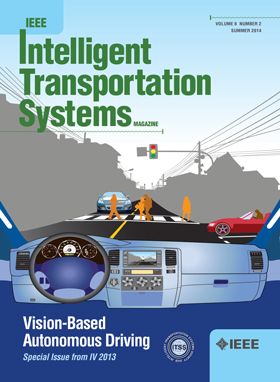E-Argus: Drones Detection by Side-Channel Signatures via Electromagnetic Radiation
IF 7.9
1区 工程技术
Q1 ENGINEERING, CIVIL
IEEE Transactions on Intelligent Transportation Systems
Pub Date : 2024-08-05
DOI:10.1109/TITS.2024.3432977
引用次数: 0
Abstract
The increasing misuse of commercial drones for illicit activities poses significant challenges in their detection and identification. Existing methods, such as acoustic-based, radio frequency-based, and computer vision approaches, face limitations due to factors like miniaturization, stealth, and background noise. In this paper, we propose E-Argus, a system that leverages the electromagnetic radiation (EMR) emitted by the memory of drones. It is a basic fact that, with all types of drones, the implementation of arbitrary behavior must be digested in the built-in memory, and electromagnetic radiation is thus generated. Specifically, the memory clock drives the switching regulator causing current fluctuations that generate EMR signals at the clock frequency. E-Argus combines the relationship between the flight pattern of the drone and the memory EMR signal, analyzes the unique side-channel signatures, and utilizes advanced neural network-based identification; E-Argus can accurately detect and identify various types of illegal drones. We designed a system prototype based on USRP B210 and conducted experiments in a wide range of scenarios. The evaluation shows that E-Argus has low latency, high accuracy, and robustness in real environments.E-Argus:通过电磁辐射侧信道特征探测无人机
越来越多的商用无人机被滥用于非法活动,这给无人机的检测和识别带来了巨大挑战。现有的方法,如基于声学、射频和计算机视觉的方法,由于微型化、隐蔽性和背景噪声等因素而受到限制。在本文中,我们提出了一种利用无人机内存发出的电磁辐射(EMR)的系统--E-Argus。一个基本事实是,对于所有类型的无人机,任意行为的实现都必须在内置存储器中消化,因此会产生电磁辐射。具体来说,内存时钟驱动开关调节器,导致电流波动,从而以时钟频率产生电磁辐射信号。E-Argus 结合无人机飞行模式与内存电磁辐射信号之间的关系,分析独特的侧信道特征,并利用先进的基于神经网络的识别技术;E-Argus 可以准确检测和识别各种类型的非法无人机。我们设计了基于 USRP B210 的系统原型,并在多种场景下进行了实验。评估结果表明,E-Argus 在实际环境中具有低延迟、高精度和鲁棒性的特点。
本文章由计算机程序翻译,如有差异,请以英文原文为准。
求助全文
约1分钟内获得全文
求助全文
来源期刊

IEEE Transactions on Intelligent Transportation Systems
工程技术-工程:电子与电气
CiteScore
14.80
自引率
12.90%
发文量
1872
审稿时长
7.5 months
期刊介绍:
The theoretical, experimental and operational aspects of electrical and electronics engineering and information technologies as applied to Intelligent Transportation Systems (ITS). Intelligent Transportation Systems are defined as those systems utilizing synergistic technologies and systems engineering concepts to develop and improve transportation systems of all kinds. The scope of this interdisciplinary activity includes the promotion, consolidation and coordination of ITS technical activities among IEEE entities, and providing a focus for cooperative activities, both internally and externally.
 求助内容:
求助内容: 应助结果提醒方式:
应助结果提醒方式:


